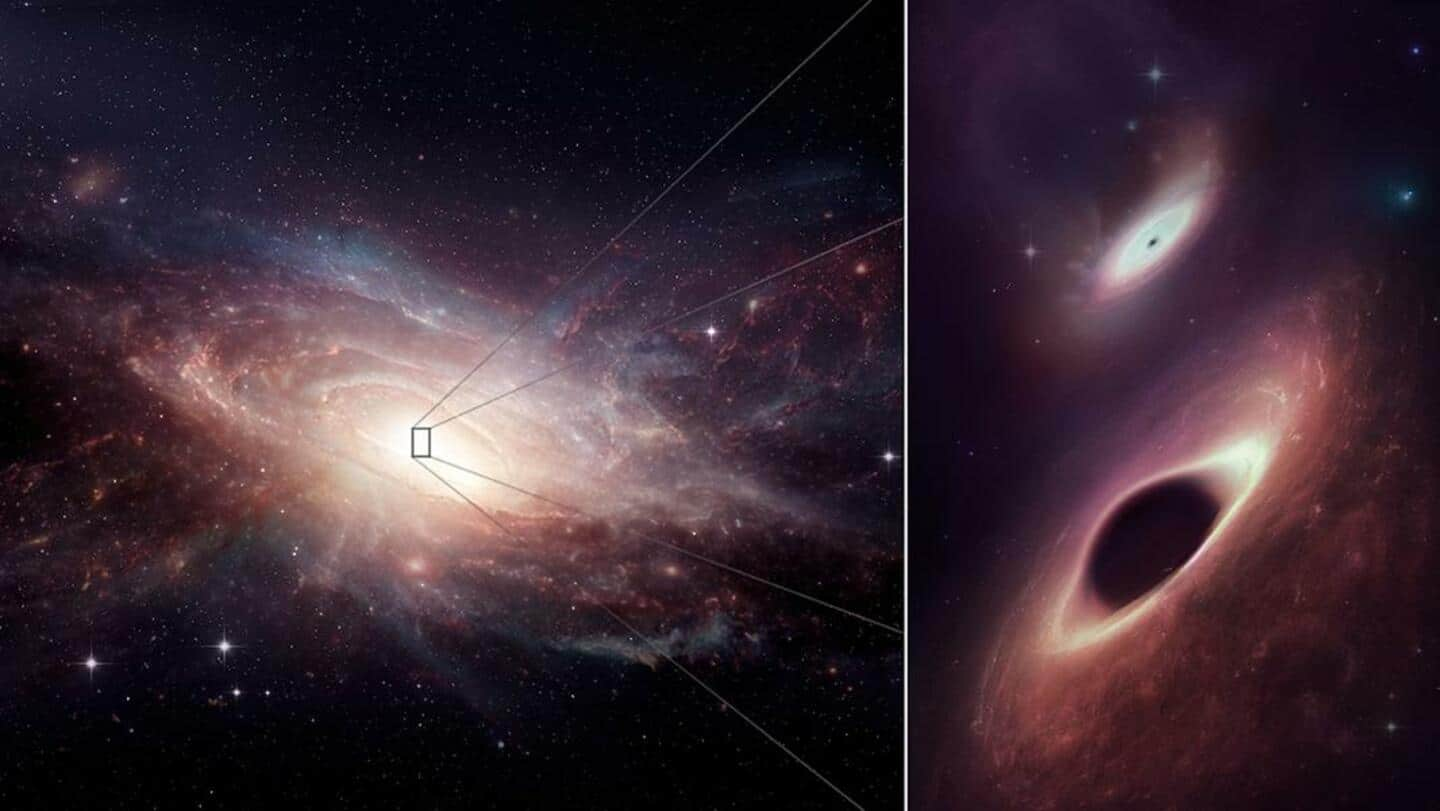
Binary black holes spotted dining together near two merging galaxies
What's the story
Two supermassive black holes found in the vicinity of a galaxy merger appear to be the closest pair found at different wavelengths, notes a recent study. Scientists discovered that the black holes were growing simultaneously near the center of the newly coalescing galaxy called UGC 4211. The "super-hungry giants," which lie 750 light-years apart, were devouring remnants resulting from the galactic merger.
Context
Why does this story matter?
The latest study suggests that binary black holes that originate from galactic mergers might be usual in the distant universe, and hence hard to observe. What came as a surprise to the researchers was that the two black holes were found next to each other, or "dining side-by-side" near the merging galaxies.
Observations
The galactic merger lies 500 million light years away
The black holes were discovered using Atacama Large Millimeter/submillimeter Array (ALMA), an international observatory in Chile. This observatory can peer through "large columns of gas and dust and achieve a very high spatial resolution to see things very close together." The two galaxies are in the last stages of merging and lie 500 million light-years away from Earth in the constellation Cancer.
Official words
"Galaxy mergers are much more common in the distant Universe"
"Our study has identified one of the closest pairs of black holes in a galaxy merger, and because we know that galaxy mergers are much more common in the distant Universe, these black hole binaries too may be much more common than previously thought," said Michael Koss, lead author of the research. He further added that the use of ALMA was a "game-changer."
Further details
ALMA's observations were combined with data from other powerful telescopes
The multi-wavelength observations from ALMA were combined with data from other powerful telescopes, including the Chandra X-ray Observatory, Hubble Space Telescope, and ESO's Very Large Telescope. Ground-based optical imaging revealed the whole merging galaxy, while Hubble unveiled the nuclear regions at high resolutions. Meanwhile, X-ray observations revealed that there was at least one active galactic nucleus in the system.
Information
Only the early stages of galaxy mergers have been studied
Until now, scientists have mostly studied only the earliest stages of galaxy mergers. The latest research can help us better understand the merger of our own Milky Way galaxy with the nearby Andromeda galaxy.
Official words
Milky Way will merge with Andromeda in about 4.5 billion-years
"The Milky Way-Andromeda collision is in its very early stages and is predicted to occur in about 4.5 billion years," said Koss. "What we've just studied is a source in the very final stage of collision, so what we're seeing presages that merger and also gives us insight into the connection between black holes merging and growing and eventually producing gravitational waves."